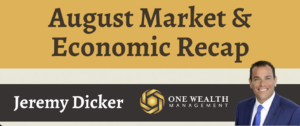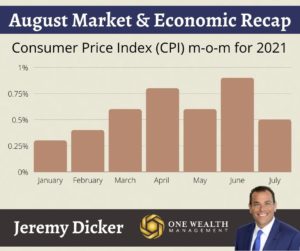

Anemic payroll, S&P stays strong, eye on inflation amid Delta fears.
Latest payroll report shockingly low
The big news last week was the release of a shocking payroll report.
According to the report, non-farm payrolls increased by only 235,000 in August, which wasn’t even close to the 728,000 new jobs anticipated by economists for the month. (However, the unemployment rate did tick down from 5.4% in July to 5.2% in August.)
Fed hits pause on stimulus roll-back
The ripple effect of that report is that it will likely keep the Federal Reserve from peeling back its monumental stimulus measures.
In fact, the Federal Reserve is watching the labor market closely, as a condition for reversing its asset purchases during the pandemic era. The August payroll numbers created quite a ripple across global markets as well as Wall Street, which saw the Dow dip most recently with fears that the economic recovery wasn’t nearly as robust as anticipated.
Of course, everyone is waiting for the inevitable easing of the Fed’s pandemic crisis support, including the central bank’s $120 billion monthly asset purchases. As usual, we’ll hang on every word from Fed Chairman Jerome Powell, who says he is committed to tracking the data and the Delta variant’s effect on the overall economy before making any rash moves.
 Inflation Watch
Inflation Watch
After climbing 0.9% in June, the consumer price index increased 0.5% in July. (August’s CPI numbers come out Sept. 15). That’s the largest dip in month-to-month inflation rates in the past 15 months. U.S. consumer prices are still at a 13-year high, but the slowing of price increases is an encouraging sign that inflation may have peaked.
Treasury Yields
That news also sent the benchmark U.S. Treasury yield upward upon fears of rising inflation.
Wall Street and the Dow
To end the month of August, the Dow Jones was down 0.13 percent, the S&P was up 0.02 percent, and Nasdaq followed by climbing 0.22 percent.
In August, the Dow gained just over 1 percent. However, the S&P 500 closed out another strong month with a nearly 3 percent gain, with a year-to-date increase of more than 20 percent. Last month, the Nasdaq outperformed even the S&P by gaining approximately 4 percent.
Throughout the month of August, the financial sector was the biggest winner, gaining 5 percent. The utility and communication service sectors followed close behind, but the energy sector was an unexpected disappointment, the only S&P sector to go backward in August.
Quote of the month:
“We have said that we would continue our asset purchases at the current pace until we see substantial further progress toward our maximum employment and price stability goals, measured since last December, when we first articulated this guidance. My view is that the “substantial further progress” test has been met for inflation. There has also been clear progress toward maximum employment. At the FOMC’s recent July meeting, I was of the view, as were most participants, that if the economy evolved broadly as anticipated, it could be appropriate to start reducing the pace of asset purchases this year. The intervening month has brought more progress in the form of a strong employment report for July, but also the further spread of the Delta variant. We will be carefully assessing incoming data and the evolving risks.”
-Fed Chairman Jerome Powell
Fascinating Financial Fact
August was the 50th anniversary of the end of the gold standard, instituted in 1971 by President Richard Nixon. Prior to that economic mandate, the price of gold was tied to the U.S. dollar. But after a secret meeting with his close advisors at Camp David in August of 1971, Nixon nixed the gold relationship, ushering in the era of floating currency values.
Upcoming notable dates and reports
September 9
Initial Jobless claims,
4-Week jobs average,
Continued jobless claims
September 14
Inflation rate y-o-y and m-o-m
September 16
Retail sales m-o-m
September 21
New Residential Construction
September 24
New residential home sales
September 30
Corporate profits Q2 q-o-q
U.S. Department of Commerce report